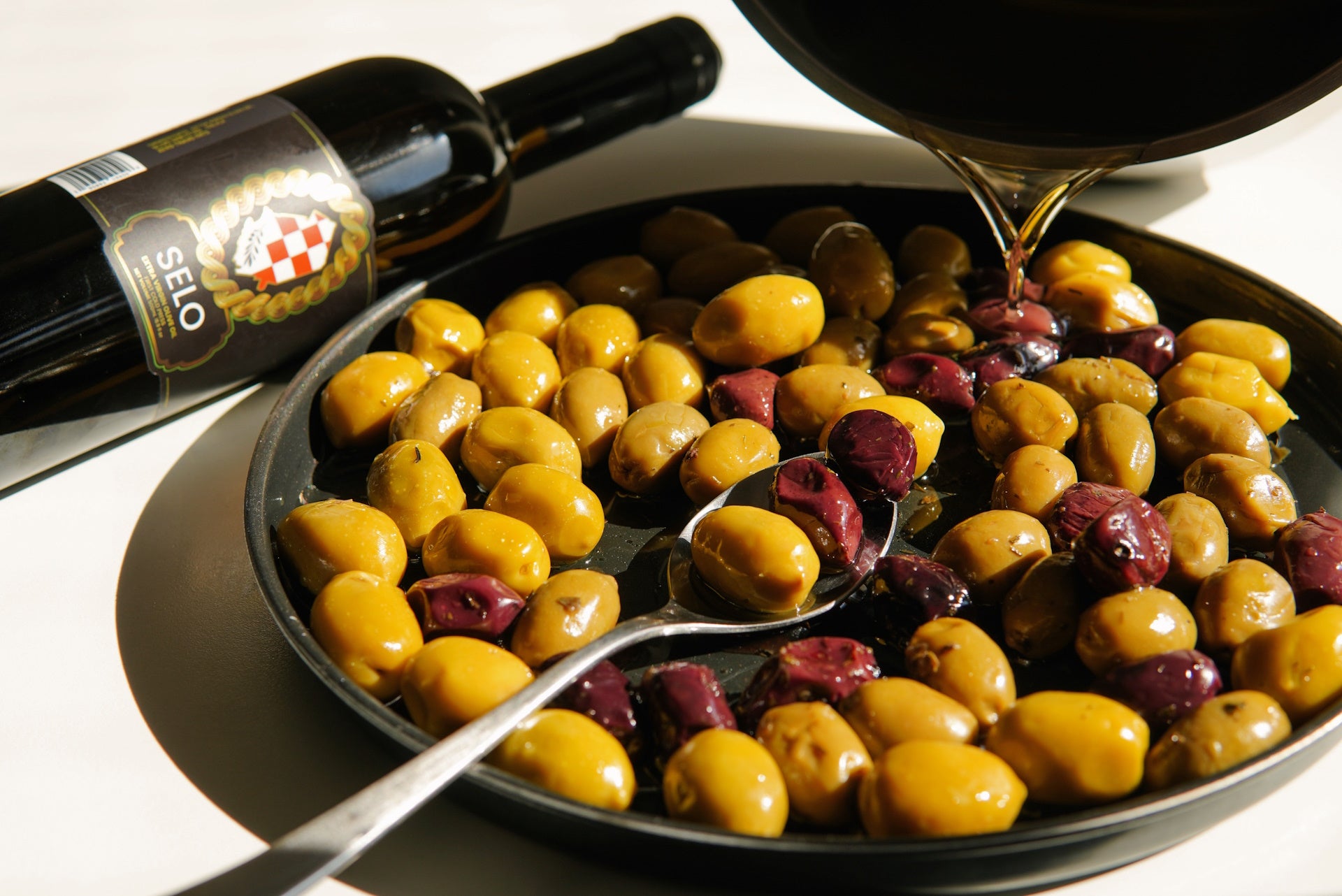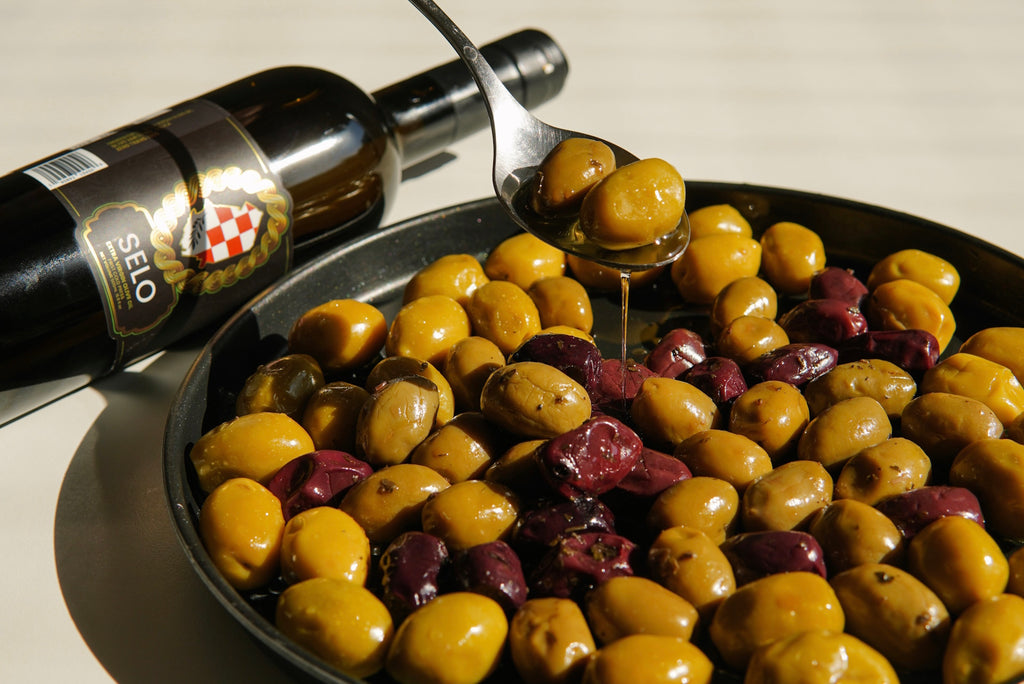What Is Refined Olive Oil?
Embarking on a journey into the world of olive oil, one term often raises eyebrows - refined olive oil. While we all know about the celebrated extra virgin olive oil, not everyone understands the concept of refined olive oil. Essentially, it's a version of olive oil that undergoes various treatments to alter certain characteristics. Colorless and devoid of any distinctive taste or smell, it stands in stark contrast to its unrefined counterpart. Now you might wonder, how does this refining process occur? And what differentiates refined from unrefined olive oil? Let's plunge into the heart of these mysteries.
Introduction to Refined Olive Oil
Think of refined olive oil as the silent guest at a vibrant, bustling Mediterranean feast. It's there at the table, yet it doesn't participate in the sensory dance of flavors and aromas that define this culinary tradition.
Refined olive oil emerges from a series of processes that seek to alter certain attributes, but crucially, without changing its initial glyceridic structure. These techniques strip away its distinctive characteristics, resulting in an oil that's lighter in hue, often even colorless.
The taste buds searching for the robust flavor profile typical of unrefined olive oils will find this variant a mystery. Tasteless olive oil might sound like an oxymoron to those accustomed to the full-bodied richness of extra virgin varieties, yet that's precisely what refined olive oil is. Its aroma too is non-existent, making it a chameleon among oils.
From a sensory standpoint, therefore, refined olive oil is essentially an enigma - light on color, devoid of smell and lacking in taste. Yet it has its roles and purposes which we'll delve into as we navigate the intricate world of olive oils.

Olive Oil Refining Techniques
Let's dive into the heart of this mystery - the refining processes used on olive oil. Understanding these methods explains why refined olive oil might lack the rich aroma, robust flavor, and vibrant color typical of its unrefined counterpart.
Bleaching serves as one technique in the refining process. This step involves heating the oil to a solid 212 degrees Fahrenheit to remove pigments, resulting in a lighter shade of olive oil.
Remember that dark, greenish hue associated with fresh olives? Bleaching takes it away.
Next up is Degumming, also known as water refining. In this phase, the oil is treated with hot water, steam, or a mix of water and acid before being spun rapidly in a centrifuge. This process strips away healthful polyphenols and gummy phospholipids, leaving behind a cleaner but less nutrient-rich oil.
Following degumming comes Deodorization, a step that eliminates any remaining unpleasant tastes or aromas. The trick here is heat; raising the temperature between 300 and 500 degrees Fahrenheit does the job nicely.
Meanwhile, Neutralization involves treating the oil with caustic soda or lye to remove any lingering color and free fatty acids.
Ever wondered how an olive oil could be so clear? Neutralization is your answer.
Last but not least is Winterization. A rapid cooling process solidifies waxes and other solid matter in the oil, which can then be filtered out for a smoother end product.
These olive oil refining techniques — bleaching, degumming, deodorization, neutralization, and winterization — work together to create an entirely different product from the original raw olive oil. But as we delve deeper into this fascinating topic, it might become clear that not all changes are for the better!
Difference Between Refined and Extra Virgin Olive Oil
Whisking away from the world of refining techniques, let's delve into the realm of extra virgin olive oil. Unlike its refined counterpart, extra virgin olive oil is a natural juice squeezed directly from the olive fruit. It's a pure, unadulterated form of olive oil that stands tall with its vibrant color, robust aroma, and distinct flavor.
When we square off these two versions of olive oil - refined and extra virgin - their differences become starkly clear.
- Treatment: Extra virgin olive oil shuns any form of chemical or heat treatment. Right from the initial crushing to the final bottling, it maintains an untarnished record. On the other hand, refined olive oil is subjected to various refining processes, altering characteristics like taste, smell, and color.
- Taste & Consistency: A sip of extra virgin olive oil takes you on a sensory journey filled with fruity notes and peppery finishes - a far cry from the neutral taste profile of refined oils. The consistency too reveals disparities; the rich viscosity of extra virgin olive oil contrasts with the thinner texture of refined oils.
- Health Benefits: Here lies the crux of the matter! Extra virgin olive oil boasts a treasure trove of antioxidants and heart-healthy monounsaturated fats. Its refined counterpart? Stripped off most beneficial compounds during refining.
Thus, when choosing between these two varieties, consider their key differences: treatment processes undergone (or not undergone), taste profiles and health benefits offered.

Uses and Varieties of Olive Oil
A world of olive oil varieties waits to be explored, each with its unique story of origin. From the robust Spanish Picual, the fruity Greek Koroneiki to the distinct Italian Frantoio, every variety has a unique flavor profile shaped by its regional soil and climate.
Certifying organizations play a pivotal role in ensuring the quality of these olive oils. Entities such as the International Olive Council (IOC) and California Olive Oil Council (COOC) set standards for purity and quality, providing consumers with an assurance of authenticity.
The magic behind these flavorful oils lies in their extraction and processing methods. Traditional techniques involve crushing olives into a paste, then pressing or centrifuging to separate oil from water and solids. Modern practices employ cold-pressing, where olives are crushed at temperatures below 27°C (80°F) to preserve nutrients and flavor.
Olive oil's color varies from golden yellow to green, influenced by factors like olive variety, ripeness, and extraction process. It's a visual feast that hints at the sensory journey in each bottle — a dance of bitter, sweet, and pungent notes on the tongue.
There's no denying the versatility of olive oil, with uses that span beyond the kitchen. It graces our plates in salad dressings, marinades, and even desserts like cakes and ice cream. However, its benefits extend further — it hydrates skin as a moisturizer, soothes irritation in lip balms, and nourishes hair in masks.
When it comes to types:
- Extra Virgin Olive Oil: The cream of the crop; cold-pressed without heat or chemicals; boasts superior taste and health benefits.
- Virgin Olive Oil: Similar to extra virgin but allows for minor defects; slightly higher acidity level.
- Refined Olive Oil: Treated to remove imperfections; lacks taste, aroma, color; often blended with virgin olive oil for consumption.
Delve into this world of olive oil varieties without fear as each offers its unique charm — enhancing dishes with their character or nourishing your body as skincare.

Conclusion
Peering into the world of olive oil, it's evident that the term refined holds a unique significance. This process involves altering the native characteristics of olive oil through various techniques, like bleaching and deodorization, to create an end product that is light in color and devoid of taste or smell.
On the flip side, extra virgin olive oil is naturally processed to retain its rich flavor, color, and health benefits. It's the unadulterated essence of olives, undiluted by any refining process.
While each oil variety has its place and purpose within culinary spheres and beyond, it's crucial to know what’s behind the labels on the bottles. Knowledge, as they say, is power - and in this case, it can lead you to a bottle of gold; a high-quality olive oil that elevates your dishes to new heights!
Next up, let's dive into the world of Croatian Extra Virgin Olive Oil – an exquisite example of top-tier olive oil.
Discover the Finest Croatian Extra Virgin Olive Oil
Ready to elevate your culinary and health journey? Look no further than Selo Croatian Olive Oil. A premium choice for those who value quality, it stands out with its exquisite taste and richness. Sourced meticulously from the sun-kissed olive groves of Croatia, each drop of this oil is a testament to the love and patience put into its creation.
Its high quality and unique flavor profile make it a must-have in any kitchen. So why wait? Bring home a bottle of Selo Croatian Olive Oil today. Let your palate savour the true essence of extra virgin olive oil!

